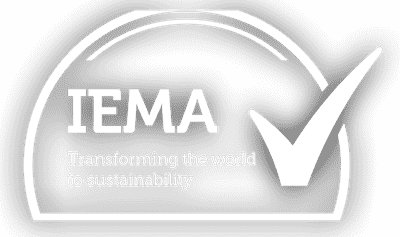

Landscape Photography
Landscape photography can be divided into two types: general landscape photography and technical photography.
General landscape photography can be used to provide visual information for a report where the image captured illustrates a particular feature or view which is communicated through text. Such examples include hard and soft landscaping features and general landscape character views. Such photography can be undertaken with many different camera types and lenses, including telephoto lenses.
Technical photography is used for setting up geometric images that can be replicated in 3D modelling software. This kind of photography is used for viewpoint photographs that will be used for the preparation of correspondingly accurate visualisations. This technique is used for the generation of accurate photomontages to accompany LVIAs.
Technical Photography
Technical photography relates to the equipment used to images that can be used with known accurate geometry. There are a number of elements that need to be fixed to undertake such photography:
Sensor size: The geometry of the sensor must be known. The larger the sensor the more detailed information can be collected. With a smaller sensor, the pixels can’t capture as much light, so a cropped sensor will produce images that have less dynamic range and never as clean as a full frame sensor. A camera with a larger sensor will also produce images with less noise, especially at high ISO. A full frame sensor camera as a result is the commonly accepted standard camera format for technical photography. Medium format cameras and smaller cropped sensors can be used, although the user will require a greater degree of camera knowledge to use these correctly.
Lens: The lens used must be a fixed, prime lens. Better quality glass lenses will give better results than cheaper plastic lenses. The 50mm lens is recommended due to its reasonably flat resultant geometry. As the lens gets wider (ie 35mm, 28mm, 24mm etc) there is increasing amounts of barrel distortion. All wide angle lenses are retrofocus which results in the barrel distortion. As the lens gets shorter (85mm, 100mm etc) the horizontal angle of view reduces. A full frame sensor camera with a 50mm fixed focal length lens is accepted as the standard camera format for technical photography. Smaller, cropped sensors require wider angle lenses to produce similar results as the full frame sensor cameras. The results of which include barrel distortion which muset be removed for the images to be used accurately.
Camera Levelling: the camera must be set up on a levelled tripod, which would normally consist of a heavy tripod and levelling plate. The objective is to achieve fully levelled horizontal and vertical planes. Where images are taken up or down slopes the camera should be mounted on a tripod, levelled and angled towards the proposed development. Only a single image can be used in this case, but camera lens choice will pick up different angles of view.
Panoramas: where panoramas are required (multiple images stitched together) a panoramic tripod head must be used, set up to avoid foreground parallax. Images should overlap by 50%. Technical photography involves the production of images created with the ultimate goal of being used for their geometry and information content purposes. The role of technical photography is to provide known geometry from which accurate visualisations can be calculated.
Camera Settings: It is assumed that the camera operator is competent in the use of cameras. The camera should be set up in Manual mode and the lens focused on the site. It is expected the camera operator has some basic camera knowledge to be able to set the camera up correctly in manual mode.
Verified Photography
The critical issue for viewpoint accuracy is how far away the proposed development is, which determines the error that can be tolerated. For example a viewpoint accuracy of 20cm with the development at 1km is as good as viewpoint accuracy of 1cm with the development at 50m. So the closer the viewpoint is to a development the greater importance on accuracy.
Verified photography is the process of recording the precise position of a camera and fixed points in a view using precision surveying equipment. Surveying equipment typically includes RTK enabled GNSS, with laser rangefinders allowing camera location and fixed points in the view to be calculated to 1cm accuracy.
The camera location is recorded using a survey nail (where possible) together with photographs of the tripod/camera setup with clear indication of the location from which the photograph was taken.
The height measurement should be to the middle of the lens.
Verifiable Photomontage /
Accurate Visual Representation (AVR)
Verifiable photomontages can only be achieved when verifiable photographs have been taken. The technique allows the precise camera position to be transferred to the 3D modelling software to ensure the same camera settings are used. A clear understanding of camera geometry and the scaling requirements of the 3D model renders ensures highly accurate visualisations can be produced.
An accurate visual representation (AVR) is less onerous as the accuracy of the camera position will not be down to cm accuracy. It is expected, though, that accuracy of less than 1m is achieved in eastings and northings and sub 50cm accuracy in ground height. However this approach will result in inaccuracies, particularly in visualisations of developments at reasonably close distances.
Map Projection Systems vs Ellipsoid
A map projection is a systematic transformation of the latitudes and longitudes of locations from the surface of a sphere or an ellipsoid into locations on a plane. Maps cannot be created without map projections. All map projections necessarily distort the surface in some fashion. Depending on the purpose of the map, some distortions are acceptable and others are not; therefore, different map projections exist in order to preserve some properties of the sphere-like body at the expense of other properties. There is no limit to the number of possible map projections.
More generally, projections are a subject of several pure mathematical fields, including differential geometry, projective geometry, and manifolds. However, "map projection" refers specifically to a cartographic projection.
In Great Britain we typically use OSGB36 projection (Northern Ireland shares the Irish Grid with the Republic of Ireland), which approximates the real-world shape of the earth as an ellipsoid and then uses a transverse Mercator projection to turn it into a 2D representation of the UK. Different ellipsoids and different projections are used in other parts of the world.
When using GPS or GNSS the data collected is generally in the local projection system, eg OSGB36. The results are given in eastings/northings and metres above Ordnance Datum.
In the UK, an ordnance datum or OD is a vertical datum used by an ordnance survey as the basis for deriving altitudes on maps. A spot height may be expressed as AOD for "above ordnance datum". Usually mean sea level (MSL) is used for the datum. In particular: In Great Britain, OD for mainland Britain is ODN (Ordnance Datum Newlyn), defined as the MSL at Newlyn in Cornwall between 1915 and 1921. Prior to 1921, OD was taken from the level of the Victoria Dock, Liverpool (ODL). The difference between the different data varies across the country; full details are available from the Ordnance Survey website. (Offshore islands often have their own datums and Northern Ireland uses the Irish datum at Malin Head.)
It is important to remember that the reality of the landscape photograph will not correspond with the OSGB36 projection. The photograph includes the real-world curvature of the earth and the effect of refraction through the atmosphere. Whilst at distance less than 1km this is barely perceptible, and distances above 1km these become more important. It is therefore important that the 3D modelling undertaken understands the accuracy issues of local projection systems and the effects of earth curvature and refraction.
Examples of the effects:
1. When stood at sea level on the beach the maximum distance to the horizon would be less than 4km
2. The Shard Tower in London would not be visible at a distance of 68 km
3. A vertical lamp-post at Lands End compared to a vertical lamp-post at John O’Groats are actually an 8.7 degrees angle away from each other as a result of purely the curvature of the earth.
Planar or Cylindrical?
All images recorded on a camera sensor are in a planar format. When such an image is sufficient to pick up the whole of a development a single image can be used for the visualisation work. However when 2 or more images need to be stitched together to fully cover a site and its setting then computer software should be used to cylindrically distort the image so that it fits on the inner face of a cylinder and stitched together to give a perfectly aligned and bended panorama.
Both planar and cylindrical projections have their inherent problems. With planar images these should be helf flat and only geometrically work when the human eye looks directly in the middle point of the image. As the eye naturally moves around the image the geometry of the image becomes incorrect. In order to align a planar 3D model view with a planar photographic image the camera settings must be precisely aligned to the centre of the photographic image.
With cylindrical projection panoramas the image should be held in an arc (not flat) and viewed along the centre line of the image.
Zones of Theoretical Visibility
A ZTV (or ZVI) is a computerised calculation to determine visibility of a features, or multiple features, in the surrounding landscape based on viewer eye-height. The calculations are as accurate as the project information and the height data-sets used. The increasing availability of Lidar DTM data across the UK has meant the results can be extremely accurate. The addition of visual buffers (such as buildings, woodland and hedgerows) to the calculation can provide an extremely powerful development planning tool.
For larger structures with a wider study area the curvature of the earth becomes an important factor and the use of software which takes account of curvature and light refraction must be used.
The results are presented on the OS Explorer (25K) mapping or aerial photography. The results are extremely helpful in identifying viewpoint receptors for Landscape and Visual Impact Assessments and Appraisals. MS Environmental have prepared ZTVs for projects across the UK, including developments which affect UNESCO World Heritage Sites, National Parks and AONBs.





